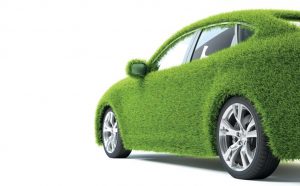Eco-friendly transportation systems have been a big challenge for our Scientists, Engineers and Developmental Economists. India is one of the few countries where the CNG option has been successfully implemented in our metropolitan urban mass transport systems and commercial vehicles.

The rest of the world, especially the developed countries have moved towards hybrid vehicles and are now are moving quickly towards electrical automobiles. Today electric vehicles are one of the disruptive technologies which presents us with big economic opportunities and has huge potential to protect the environment.
Advancements in technology are resulting in accelerated growth in the development of electric and hybrid cars. A country like China which is one of the biggest auto markets has planned for at least 20% of their vehicle sales from this green category of vehicles by 2025.
India too has come up with an ambitious program of introducing mobility systems driven by electric power. The policy says that by 2030 India would be producing all new electric passenger cars. It is noteworthy that a similar policy has also been announced for the Indian Railways where within next few years only electric locomotives would be inducted by the railways and diesel locomotives would gradually phased out. This is part of the National Electric Mobility Mission Plan 2020 (NEMMP) which was launched in 2012. The NEMMP plans to deploy 5-7 Million Electric Vehicles by 2020 in the country. Implementation was slow till 2015 when FAME (Faster Adoption and Manufacturing of Hybrid and Electric Vehicles) Scheme was launched. Rs 14,000 Crores are targeted to be spent under FAME and a beginning, though small, has been made with Rs 75 Crores in 2015-16 and Rs 128 Crores in 2016-17. This allocation will rise significantly and in addition to pilot projects, funds are being allocated for Charging stations infrastructure and direct financial support for sales of EV’s.
The world faces a huge challenge of protecting our environment and global warming which are caused largely due to burning of fossil fuels which in turn result in huge carbon emissions. The Indian policy highlights that our carbon emissions from vehicles will increase from 150 Mn tons to over 500 Mn tons by 2030, so maintaining our current motor vehicle policy is untenable.
India has also taken its first steps towards increasing EVs on its roads. Reiterating its commitment towards Paris agreement, the Government has unveiled its intentions of for a mass scale shift to electric vehicles (EVs) by 2030. Indian auto makers are already gearing up to meet this challenge. Indian Oil Corporation (IOC) – a public sector gasoline company – has reacted by installing India’s first charging station in Nagpur. Many more are on their way.
The push towards EVs is a huge boon for India’s electronics sector. Not only development of the vehicles, but development of the entire EV ecosystem will result in significant opportunities for the electronics design and manufacturing sector.
By ELCINA

























